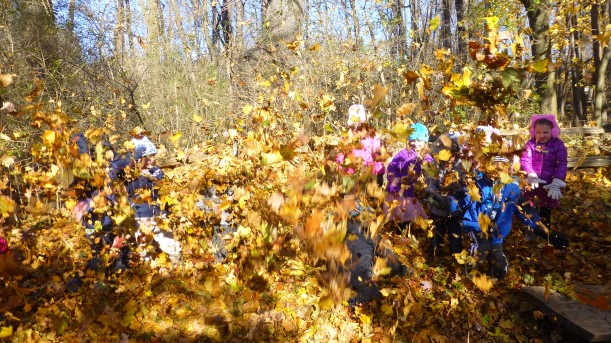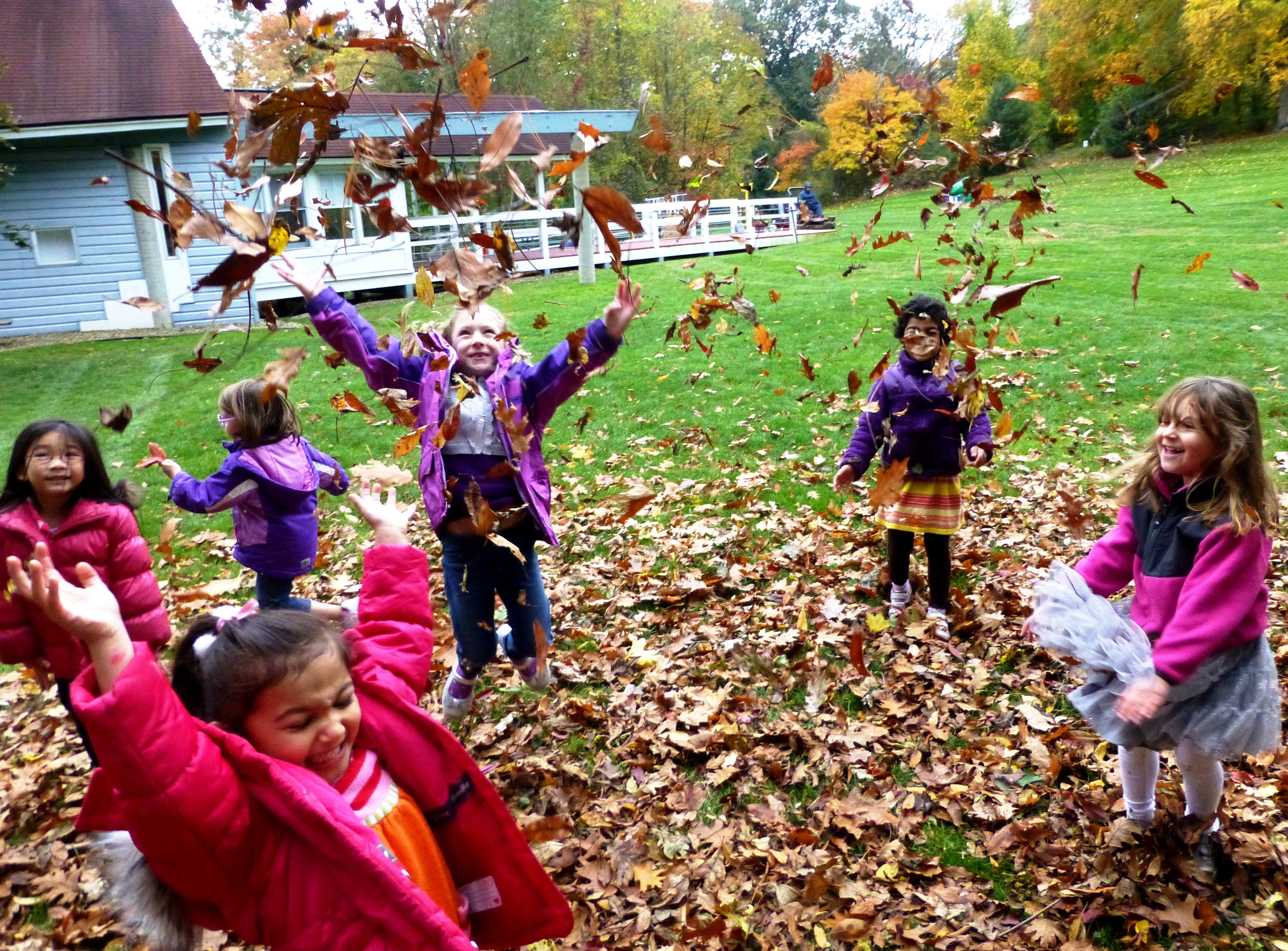What happens to garbage?
Our students are currently conducting an experiment to see what happens to garbage when it gets buried beneath the soil. They have placed a tomato, pepper, leaf, and plastic grocery bag in a clear compost container and covered each item with dirt. The students will be observing and journaling about the decomposing process, or lack there of, over the course of several weeks.
https://vine.co/v/OM21F1pnQvQ
Leaf Sort
Our interest in leaves last week inspired a throw-back morning message today. Four leaves were featured and we encouraged the children to support their choices with evidence. Some noticed that a leaf was a different shape or had a different proliferation of spots. Others pointed out the color differences. We were interested in finding many ways to group even a small selection of items.
Once we had experience with finding a single difference, we expanded the activity to combining like items to make sets.
The children invented the “rules” for these set circles.

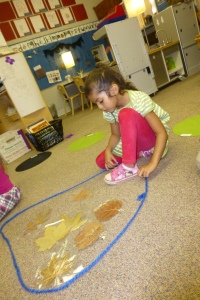
The problem occurred when our final leaf was placed in the “not spiky” set. A few children disagreed about the general “spikiness” of the long, fern-like leaf. It looked “spiky” in its overall profile, but each individual leaf was actually rounded.
The children decided that it must go in both circles.

As you can see, another difficulty arose. If the leaf was in-between the circles, it was in neither group. If it was creating a bridge between the circles, it was partly in both circles.

It took a bit of playing with the string, but they did discover that if they overlapped the string, it would make a section for a leaf with both attributes.
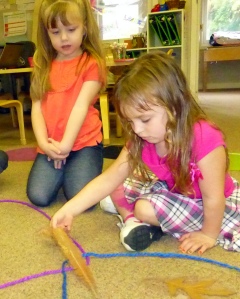

Ah, Fall…
Our Tree Unit
In the past few days, the students have taken an interest in the leaves that seem to be falling all around us. While this may have begun as a wondering about the beauty of fall, it has developed into a deeper investigation about how trees grow, get food and water, and why the leaves change color.
We started this unit of study by choosing to adopt two trees that currently grow near our playground. Each student was able to choose which tree they wanted to know more about. The students collected leaves specific to their tree, did bark rubbings, and drew pictures of their tree from a variety of angles. While both trees looked fairly similar from far away, the students learned that they were actually quite different when they moved closer. They realized that not only were the leaves different colors, but they were shaped differently as well. The students began to wonder what other kinds of leaf shapes were out there.
So the next day, we gave the students the opportunity to explore the shapes and details of a variety of leaves by viewing them on the light table. The light provided the students with the perfect opportunity to view all the shapes, lines, and veins that each leaf possessed. We discussed how the leaves were different and how some of them were the same. The students then traced the outline of their favorite leaves onto a piece of paper and then added any details they noticed.
Each of these activities may seem quite simplistic, when in fact the students are learning valuable skills during each task. They had to use their critical thinking skills when deciding what they wanted to know about trees and leaves. Each child had to use their observation and deduction skills when investigating the tree’s appearance, while also practicing self-control and focus when collecting only the leaves that belong to their tree. Lastly, the students practiced their fine motor control and artistic expression when drawing the tree from various perspectives and tracing/painting the details from the leaves they made at the light table.
[slideshow]
Fall is here!
Fall has officially arrived and what better way to celebrate than to repeatedly hurl yourself into a pile of leaves?!
The students could not have been more excited to realize that the leaves had not been vacuumed up by the landscapers. Within minutes, they were knee-deep in the piles, tossing handfuls of multicolored foliage into the air like confetti at Big Bird’s birthday party.
There is nothing sweeter than throwing caution to the wind and then spending the rest of the day with leaves in your hair.
[slideshow]
{This Moment}
Sometimes you are lucky enough to capture an image that exemplifies your thoughts, hopes, dreams, and feelings. Inspired by SouleMama, many bloggers across the web are posting their “perfect moments” for all to share. This is an activity in peace and joy and needs no words to carry the beauty of the moment.
Leaf Collections
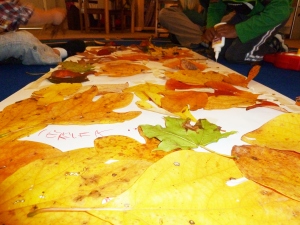 While hiking in the woods with Mr. Cooper, the students gathered a large collection of leaves. When they arrived back in the room, we weren’t quite sure what to do with them. (I was pretty sure that placing 20 to 30 leaves in each child’s back pack might make for a bit of a hectic evening for you all!) Then, we realized that they would make a lovely mural for our room. Each child choose how they were going to adhere the leaves to the paper and placed in a flurry of activity. It was wonderful to see them all working together on such a large project without any squabbling or worry over ownership. The children talked as they worked and solved design problems as they went. When leaves didn’t stick properly, other children offered kind advice. When an empty spot in the mural was noticed, it was quickly filled. There were also lots of conversations regarding the shapes and colors of the leaves. Now we’ll have to see if we can find any unrepresented varieties on the playground!
While hiking in the woods with Mr. Cooper, the students gathered a large collection of leaves. When they arrived back in the room, we weren’t quite sure what to do with them. (I was pretty sure that placing 20 to 30 leaves in each child’s back pack might make for a bit of a hectic evening for you all!) Then, we realized that they would make a lovely mural for our room. Each child choose how they were going to adhere the leaves to the paper and placed in a flurry of activity. It was wonderful to see them all working together on such a large project without any squabbling or worry over ownership. The children talked as they worked and solved design problems as they went. When leaves didn’t stick properly, other children offered kind advice. When an empty spot in the mural was noticed, it was quickly filled. There were also lots of conversations regarding the shapes and colors of the leaves. Now we’ll have to see if we can find any unrepresented varieties on the playground!
{This Moment}
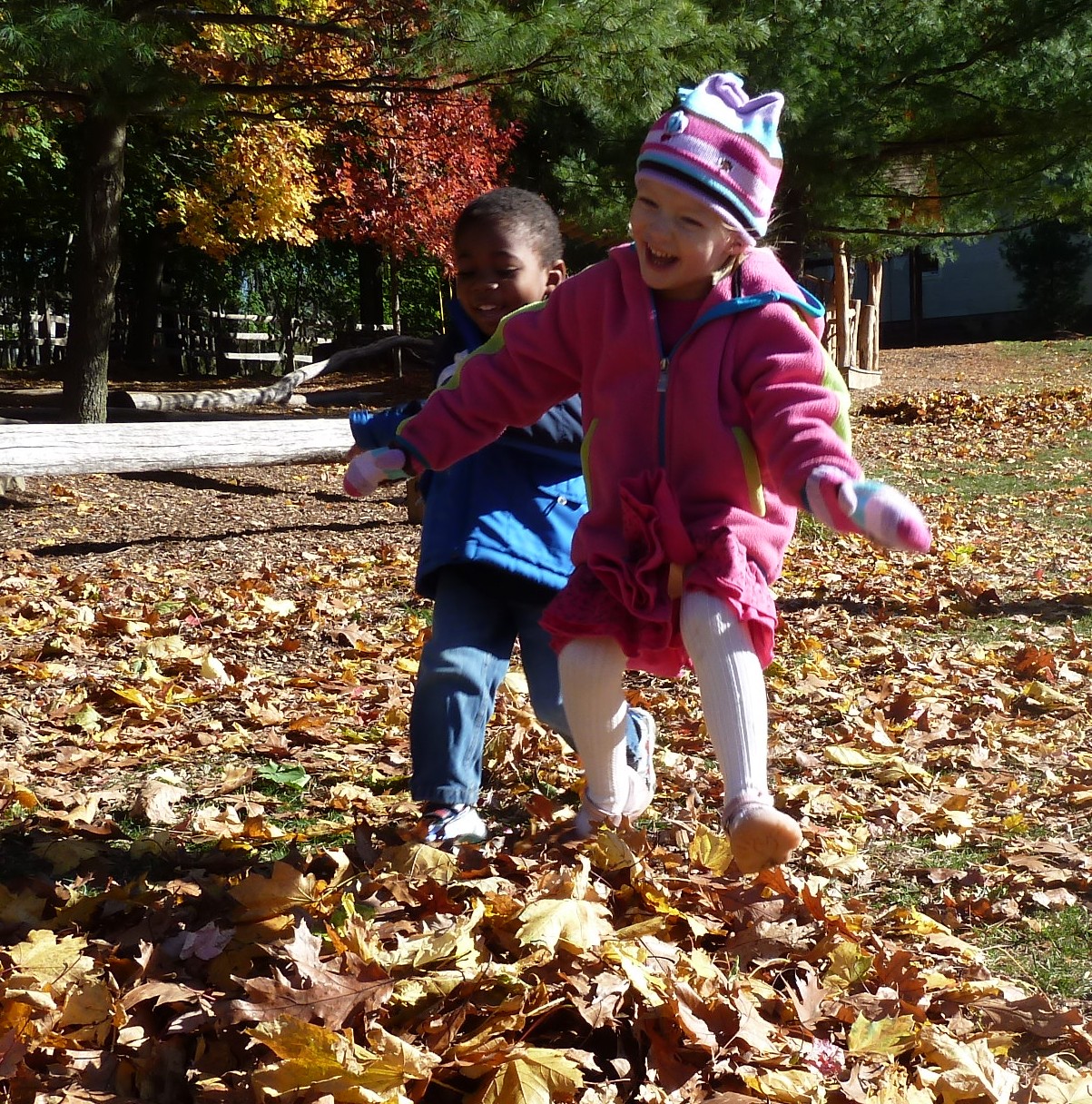 Sometimes you are lucky enough to capture an image that exemplifies your thoughts, hopes, dreams, and feelings. Inspired by Soule Mama, many bloggers across the web are posting their “perfect moments” for all to share. This is an activity in peace and joy and needs no words to carry the beauty of the moment.
Sometimes you are lucky enough to capture an image that exemplifies your thoughts, hopes, dreams, and feelings. Inspired by Soule Mama, many bloggers across the web are posting their “perfect moments” for all to share. This is an activity in peace and joy and needs no words to carry the beauty of the moment.

